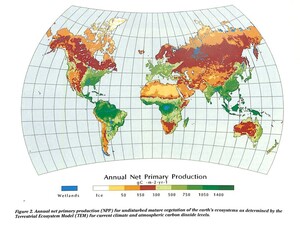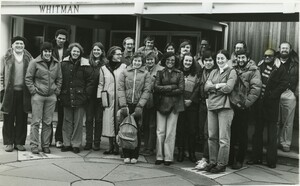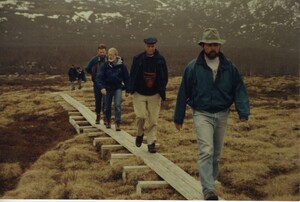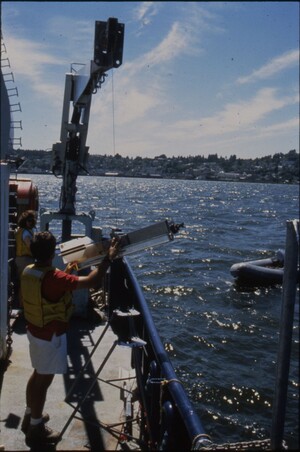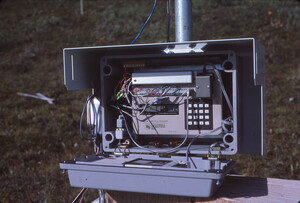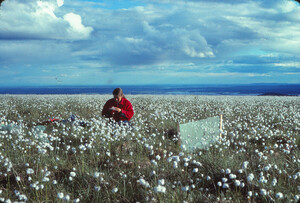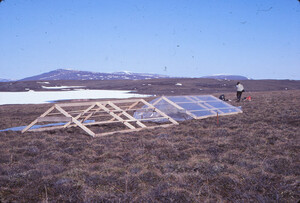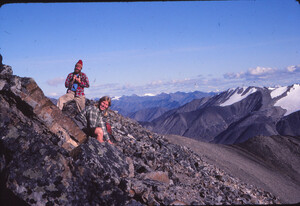Centers and Programs
Figure from page 22 of the Ecosystems Center Annual Report 1992
This is a Winogradsky column that Joseph Vallino uses in a SES course on Methods in Microbial Ecology. Almost every bacterial metabolic process that occurs on Earth also occurs in these columns that are simply constructed by placing freshwater or marine sediments augmented with a carbon source (such as saw dust) and fertilizer (N and P) in a column and topping it off with either fresh or sea water. Julie Huber is a co-instructor in the course.
Students at the January course on ecology at the Ecosystems Center. George Woodwell at far left. Bruce Peterson stands a far right. Circa 1979-1982
Right to Left- Ed Rastetter, John Hobbie, Frank Bowles. Ecosystems Center researchers walk on a boardwalk at a fieldsite in Abisko, Sweden.
Scientists sampling at Columbia River Land Margin Ecosystems Research project
These are methanotrophic microcosms that are being used to develop and test new approaches to modeling microbial biogeochemistry using thermodynamic approaches (namely, the principle of maximum entropy production).
A Campbell CR21x data logger at one of the Ecosystems Center's LTER sites.
Lee Stuart (grad student from San Diego State/UC Davis) collecting Eriophorum (cottongrass) seed, late 1970s. The location is probably along the Elliot Highway north of Fairbanks, Alaska.
Researchers setting up an early version of "greenhouse" experiments at Toolik Lake, Alaska.
A Sunday hike in the Brooks Range, Alaska, about 1980-81. The woman is Barbara Lachenbruch (student of Terry Chapin's, Univ Alaska). Behind her is Tom and Ellen (last names unknown), working at Toolik Lake at the time.
Aerial photo of agricultural land and river leading into Plum Island Ecosystem
Title page of the book "Processes in Microbal Ecology". The author, David L. Kirchman, has written a note to Ecosystems Center scientist Ivan Valiela.

